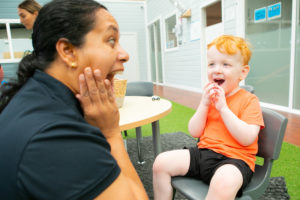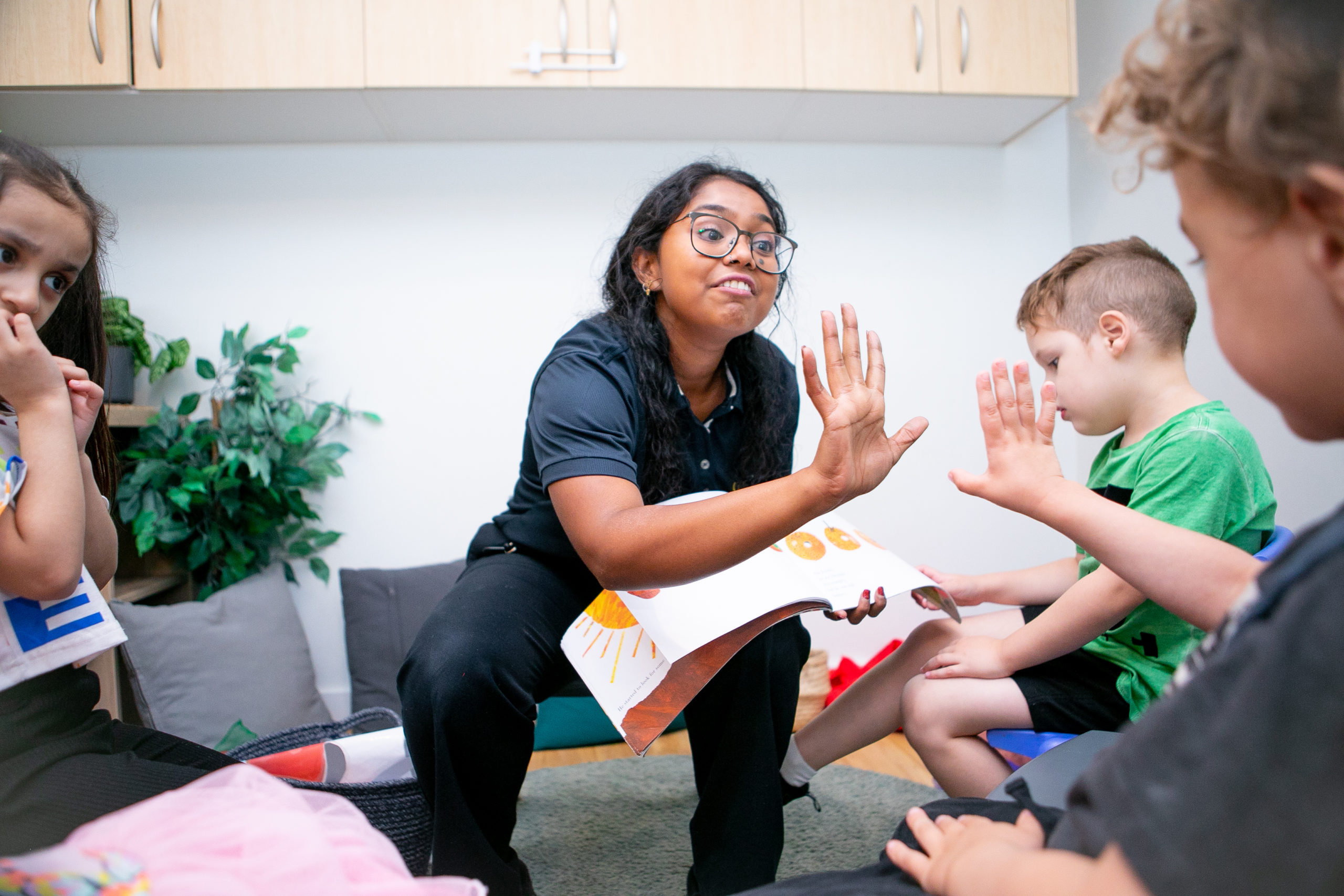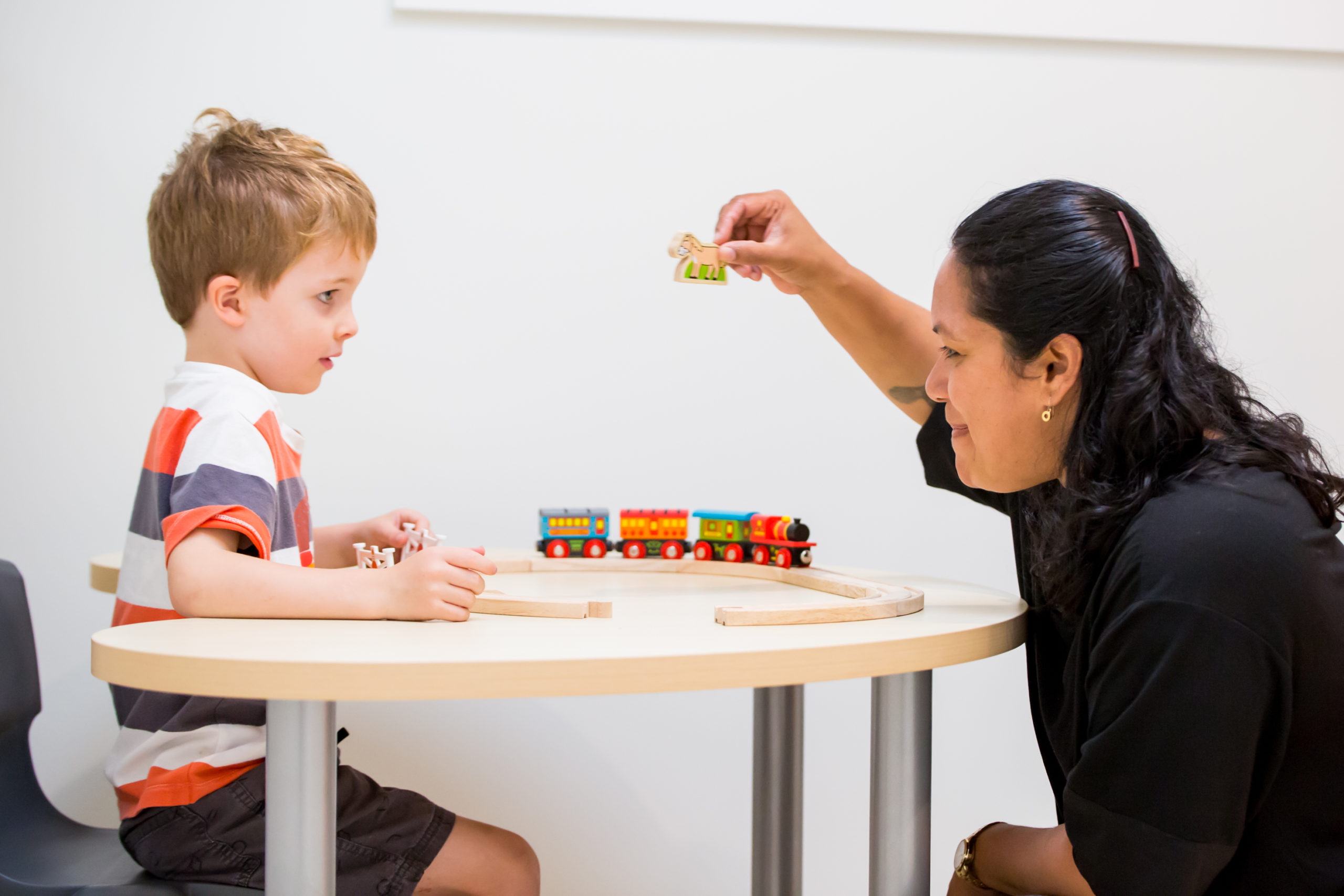Music is intrinsically motivating. It is a naturally rewarding experience – it’s fun, its predictable, and it’s rhythmic! Action songs in particular, are a powerful tool to use to support children’s joint attention and imitation skills. Imitation is fundamental to child development as it allows the child to learn new skills. As we know, imitation can be quite challenging for a child with ASD, so it’s even more crucial that we provide motivating experiences for them in order to support and build on the development of these skills. Let’s learn how to Teaching Imitation through Song to your child.
Below are some tips to support your child to imitate you through action songs:
* When singing songs to your child, be animated! Exaggerate the actions, your facial expressions and sound effects. Change the tone of your voice as appropriate to the song. Be silly and fun! This motivates the child to want to look at you and join in!
* Repetition is key, so it becomes predictable for your child. This helps them learn what to expect next. Give your child the opportunity to learn the song before you expect them to imitate you, particularly if the song introduced is new to them. You could sing before a routine time e.g. meal time, nappy change, or bed time, after reading a story or during play.
* When your child becomes familiar with the action song, it is now time to intentionally pause in certain parts of the song. Pausing is such a powerful strategy to use, because it encourages your child to participate.
Pause, give your child an expectant look and wait for them to:
1. Look at you and prompt you to continue singing through vocalisation or gesture
2. Imitate the next action in the sequence
3. Continue the song. For instance, “Five little monkeys jumping on the bed. One fell off and bumped his…” (put your hands on your head and wait for them to do the same) or vocalise the next words/sounds.
That is the beauty of music! It becomes a wonderful opportunity to encourage joint attention between yourself and your child, and facilitates imitation of expressive language and various motor actions and oral-facial movements (I.e. movements with face and mouth such as poking out tongue, blowing raspberries).
Some fun action songs that you could use to encourage imitation include:
1. Heads, Shoulders, Knees and Toes
2. If you’re happy and you know it
3. Baby Shark
4. 5 Cheeky Monkeys Jumping on the Bed / Swinging in the Tree
5. Five Little Ducks
6. Wheels on the Bus
7. Hokey Pokey
8. Open Shut Them
9. Dancing Face by Justine Clarke
10. Any action songs by Genevieve Jereb (many of these songs also assist in supporting sensory processing; sensory modulation and integration).
Written by Gabby Castellarian – Early Childhood Teacher and ESDM Therapist






